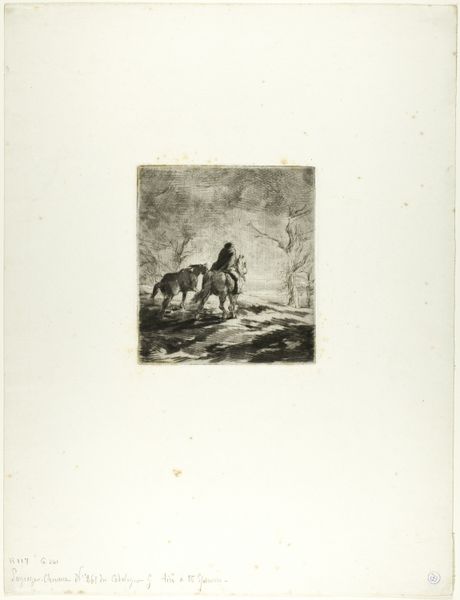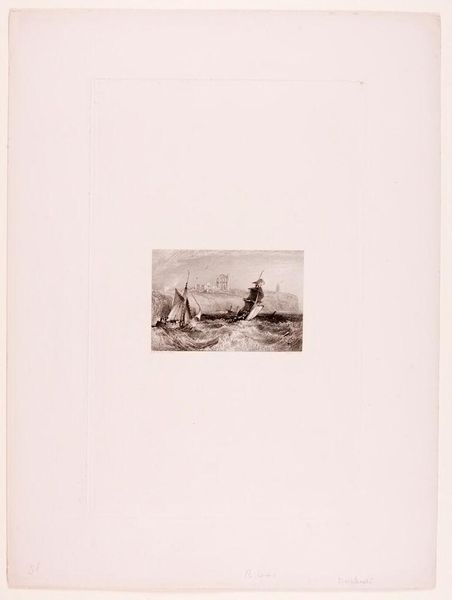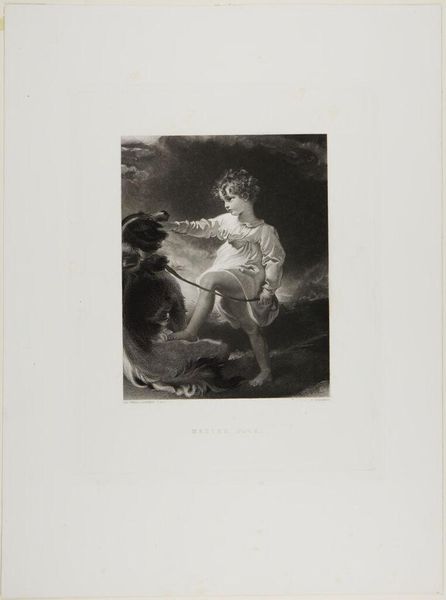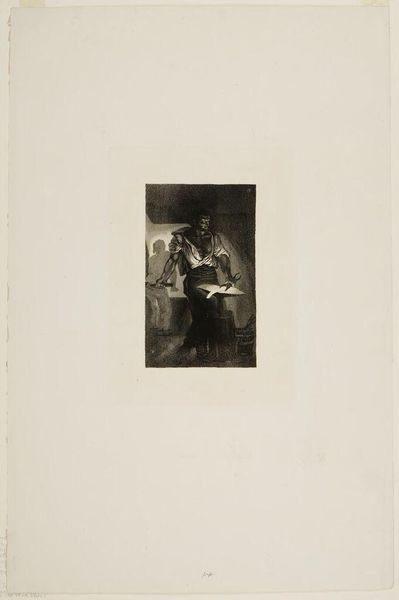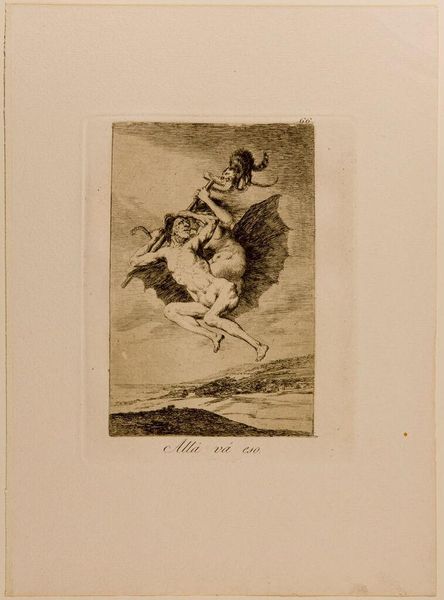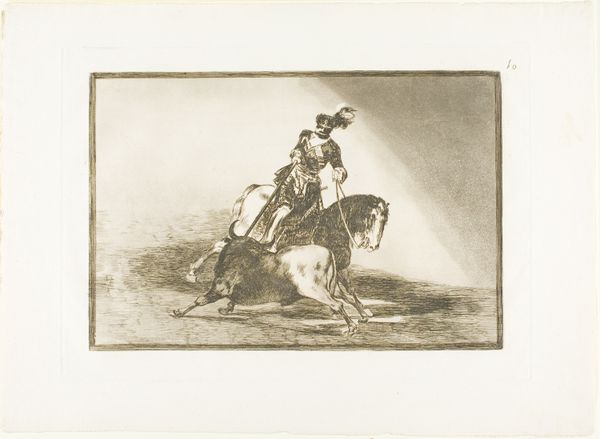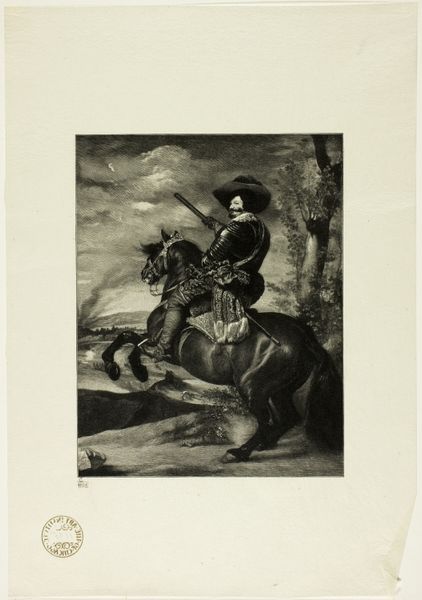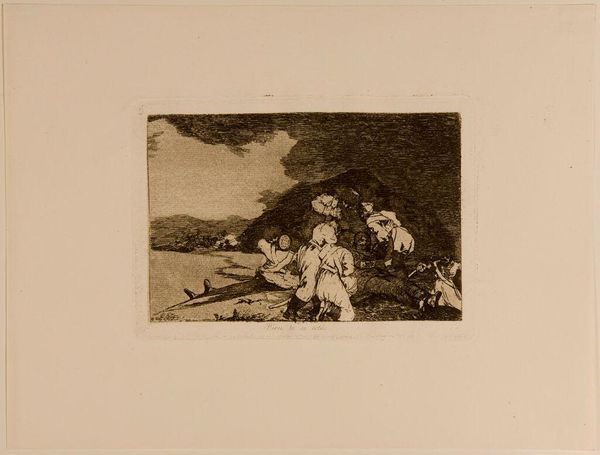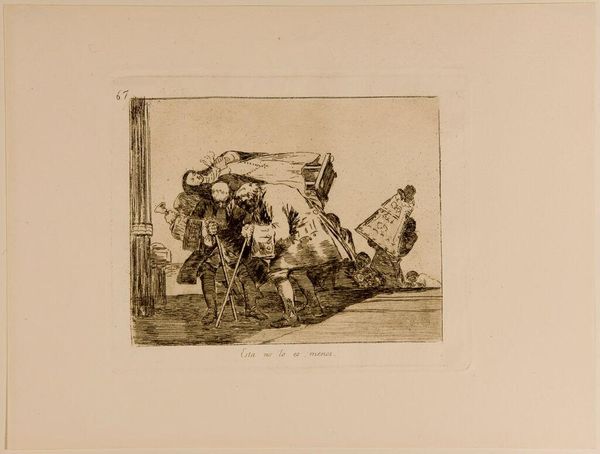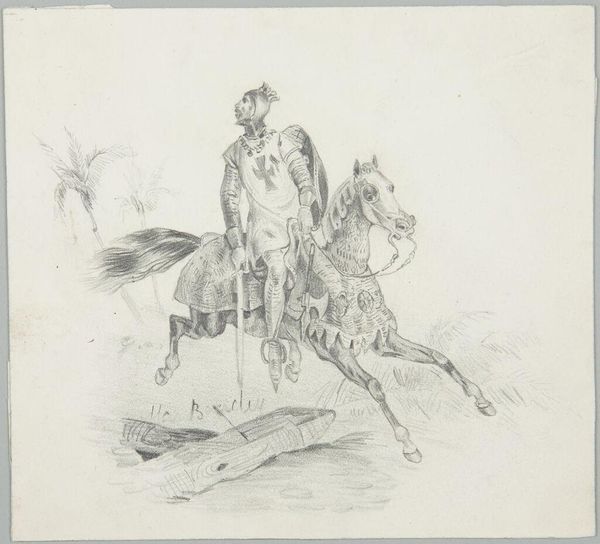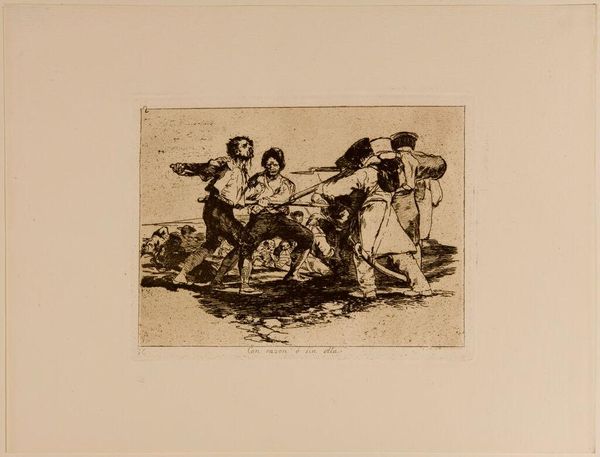
print, woodcut, wood-engraving
#
portrait
# print
#
landscape
#
woodcut
#
history-painting
#
wood-engraving
Dimensions: 6 7/16 x 5 in. (16.35 x 12.7 cm) (image)12 1/16 x 9 5/8 in. (30.64 x 24.45 cm) (sheet)
Copyright: No Copyright - United States
Curator: Immediately, the dramatic lighting strikes me – it really enhances the sense of movement and the power dynamic between the rider and the viewer. Editor: I find myself reflecting on Timothy Cole’s print, titled “Don Olivarez,” created in 1906. What a feat to recreate such grandeur within the limitations of wood engraving. Curator: Precisely. Think of the labor involved: each line meticulously carved into wood to create the illusion of tonal gradation. It blurs the boundaries between reproductive print and artistic interpretation, wouldn't you agree? Editor: Indeed, considering that period's intense debates around reproduction. Wood engraving held a crucial role in disseminating imagery, contributing to popular historical narratives and the perception of national identity. Who *was* this Don Olivarez for the American public of 1906? Curator: Well, that is the magic. The crisp detail! Look at the armor – replicated so realistically. This image had to be a testament to Cole’s craftsmanship as much as it was to its subject. We're also encountering a shift towards valuing the skills present in both “high” and "low" art production. Editor: And a fascinating case of image appropriation. He's not simply portraying Don Olivarez, he's borrowing from established artistic traditions to reinforce, or perhaps even question, ideas about nobility and leadership. A carefully placed political gesture, disseminated through the market for prints and affordable reproductions. Curator: Ultimately, the medium itself becomes a messenger. The act of reproducing allows Cole to recontextualize historical figures, forcing viewers to examine their values and associations surrounding power. Editor: Thinking about this from the context of today, I see how revisiting historical images prompts us to engage in debates over cultural inheritance and societal expectations, something museums must negotiate regularly. Curator: It’s true! The art is a time capsule not only regarding its subject, but also for its modes of distribution and the very act of interpretation. Editor: Well, reflecting on the historical context surrounding image reproduction and shifting cultural values certainly grants a richer lens through which we view "Don Olivarez". Curator: And for me, seeing it as a physical object crafted meticulously to disseminate certain concepts gives such profound respect for Cole's labor and intent.
Comments
No comments
Be the first to comment and join the conversation on the ultimate creative platform.
